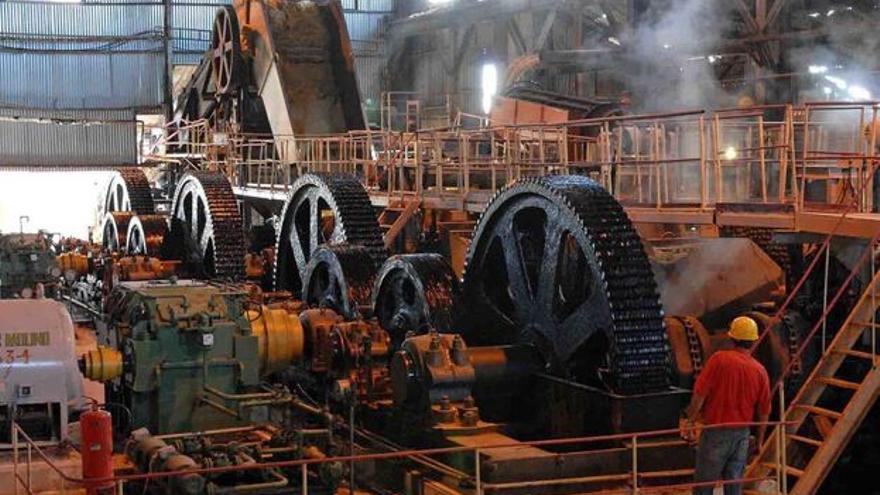
![]() 14ymedio, Madrid, 13 January 2024 — The 2023-2024 sugar harvest has just begun in Cuba, but the regime cannot hide that, once again, it will end in a debacle. None of the Ciego de Ávila sugar mills, for example, have begun to grind. In an article published this Friday, the newspaper Invasor says that the delay is due to “different inconveniences,” without giving details, and adds that “compliance with the economic-productive indicators of the territory is in danger.”
14ymedio, Madrid, 13 January 2024 — The 2023-2024 sugar harvest has just begun in Cuba, but the regime cannot hide that, once again, it will end in a debacle. None of the Ciego de Ávila sugar mills, for example, have begun to grind. In an article published this Friday, the newspaper Invasor says that the delay is due to “different inconveniences,” without giving details, and adds that “compliance with the economic-productive indicators of the territory is in danger.”
At the end of November, the official press announced that of the 25 sugar mills that would be used in the current campaign, only two – Ciro Redondo, in Ciego de Ávila, and November 10, in Artemisa – due to repairs, would begin to grind late, on January 10 and in February, respectively. The others would begin in December. But this has not come to pass.
In Sancti Spíritus, according to an extensive article published on Wednesday by Escambray, they had “an unstable start,” in the words of Antonio Viamontes Perdomo, director of the Melanio Hernández sugar mill, where, they say, the collective “is performing magic to fulfill the plan.”
The Melanio Hernández sugar mill started six days later than expected, on December 26, but two days later it stopped because of the “cold” brought by the rains
The milling started six days later than planned, on December 26, but, two days later, it stopped because of the “cold” brought by the rains. After resuming its work on January 2, it was only operational for four days, because “we had to stop again to fix a crack in the supply pipes to the boiler.”
Viamontes Perdomo unraveled to the provincial newspaper his litany of problems: “When you stop for many hours everything is complicated because the industrial process uses sugary materials that determine timing and conditions; we do not yet have the bagasse [fibrous residue from the sugarcane stalk] to provide all the steam needed; there is moisture in the fields; there are 13 combine harvesters that have not been incorporated due to the lack of fuel, and those that are working suffer breakdowns. Because of all that, it is very difficult to get concrete data on the industry’s efficiency, but the workers do what is necessary to stabilize the sugar harvest.
Escambray reports that this year only 40% of the planned cane has been planted (1,984 acres of the 4,992 announced). Despite this, the article ends optimistically: “An unstable beginning doesn’t always end badly.”
Las Tunas, for its part, is also late. As reported by the regime, in this eastern province the Antonio Guiteras sugar mill hasn’t yet started. It’s waiting for the coming visit of “a commission designated to accredit the readiness of the system to start grinding.”
In the same territory, it was not until last Sunday that the Majibacoa sugar mill started up, and it is planned to produce 61,500 tons of sugar. As if that were not enough, in the first few days only 66% of the mill’s capacity was ground, according to its director, David Puig Brito, who also pointed out “an interruption as a result of failures in the supply pump of the boilers.”
Las Tunas is also late. The Antonio Guiteras sugar mill has not yet started and is waiting for the coming visit of “a commission designated to accredit the readiness of the system to start grinding
“It’s terrible to start the harvest so late and then have cane coming from Puerto Padre, Menéndez and Yara, in Granma Province,” a local source tells this newspaper. “Having to bring cane from so far away lowers the output a lot.”
In Villa Clara, the official newspaper Vanguardia reports that the harvest has started “in difficult conditions, with material limitations and organizational deficiencies.” In an article published this Thursday, the newspaper mentioned the visit of the first secretary of the Communist Party in the province, Osnay Miguel Colina, to the three sugar mills in Villa Clara that are working. He warned of “deficiencies” and “emphasized the need to have an efficient harvest, despite the limitations of resources and the delays, given the late start of the three mills due to lack of inputs.”
What is happening and will happen with the sugar this season, however, is no surprise. Already in September, the authorities of Sancti Spíritus predicted a harvest even worse than the previous year, because the cane had barely been planted. In June, in that province, only 30% of the harvest plan of the more than 123,553 acres available had been met.
In 2022-2023, the harvest reached only 350,000 tons, according to an official report at the time, compared to 473,720 in 2021-2022, which had meant a disaster. The result of that campaign barely exceeded half of what was expected – 911,000 tons – and was not enough to cover domestic demand, 500,000 tons, or export commitments, 411,000 tons.
Translated by Regina Anavy
____________
COLLABORATE WITH OUR WORK: The 14ymedio team is committed to practicing serious journalism that reflects Cuba’s reality in all its depth. Thank you for joining us on this long journey. We invite you to continue supporting us by becoming a member of 14ymedio now. Together we can continue transforming journalism in Cuba.
